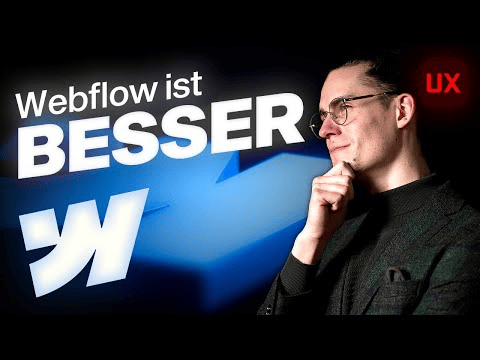B2B online marketing - That's how it works in business!
How to reliably win customers with the right B2B online marketing strategy
Although you already know that the Internet has great potential for your company, we would like to illustrate the urgency once again at the beginning with an impressive figure:
In his book”They Ask, You Answer“Marcus Sheridan cites a B2B study from 2016, which found out the following: Nowadays, customers already have 70% (!) of their purchase decision met before they make contact with the respective company for the first time. (1)
Why is that number so high?
Because the Internet enables customers to obtain detailed information about a product or service before they contact the provider.
With minor drawbacks, this applies to almost all industries.
Think about it:
What do you do if you are looking for a solution to an internal company problem or would like to find out more about a service? --Right: you”Google“.
that German Institute of Marketing writes about buying behavior in the B2B sector:
“[Customers should] be provided with a sufficient amount of information. The more [they] can learn about the product, the more likely they are to make a purchase. “(2)
Potential corporate customers are holing the Internet with questions... Why shouldn't you find the answers on your website or channels?
Before we look in detail at how we can do effective online marketing in the B2B sector, let's take a quick look at the terminology:
What is B2B online marketing?
The term “B2B online marketing” basically means nothing more than a strategy with which we Acquire targeted corporate customers via the Internet Can.

This strategy usually consists of several components/measures/tactics/channels.
What is the difference to B2C online marketing?
The difference to the B2C sector is not as big as you might think. Of course, not all measures and strategies from the B2C sector can be applied 1:1 to the B2B sector.
But in the end, the goal remains the same: We want to attract new customers in a targeted manner.
In contrast to a purely retail market, in the B2B sector, however, we usually deal with a smaller target group, which can be narrowed down by very specific characteristics (e.g. business model, company size, turnover).
However, we must not make the mistake of taking the term “company” too literally. Sure, the company is shown on the invoice - But there is always a person behind every business relationship.
We therefore prefer the term “B2P” (= Business to People).
The B2B online marketing strategy
Before we get to work and develop a B2B online marketing strategy, we should first ask ourselves a crucial question: Who is our customer?

Here, we should be as specific as possible in order to be able to address customers in a targeted manner later and to keep wastage as low as possible.
With countless platforms, ever new advertising opportunities and an almost endless reach, the world is open to us in online marketing, in the truest sense of the word...
It is therefore all the more important to clarify from the outset who we want to address and - even more importantly - who we want to address not want to address.
The B2B customer journey
As soon as we know who our customer is, the next step we can do is with the so-called Customer journey employ.
The customer journey describes the path that the (potential) customer takes before they decide to buy from us.
Although this path does not look exactly the same for every customer or for every industry, the journey can basically be divide into 5 phases.
Let's take a closer look at these 5 phases using an example.

Mr. Müller is an entrepreneur and is currently winning his customers through conventional “offline marketing”:
Stage 1: No awareness
Mr. Müller uses conventional “offline methods” to acquire customers and is not aware that he could also effectively acquire new customers online.
Stage 2: Problem Awareness
Mr. Müller learns from a friendly business partner that you can also win new customers very effectively with online marketing. He is interested and begins to deal intensively with the topic via the Internet. He is enthusiastic about the approach - there is only one problem: neither he nor his employees know how to implement an online marketing strategy.
Phase 3: Solution awareness
As part of further Internet research, Mr. Müller learns that there are specialized agencies that can implement an online marketing strategy for his company
Stage 4: Product Awareness
Mr. Müller compares the offers and services of various agencies. He makes direct contact with three providers whose websites have convinced him.
Phase 5: Purchase awareness
After intensive research and lively exchange with agencies, Mr. Müller decided to have the company website redesigned and put the implementation of an individual online marketing strategy in the hands of the agency, which has convinced him in the long term during his customer journey.
Identify the phase of the customer journey & act accordingly
The customer journey model is not just another theoretical structure that marketing professionals like to use because it has a fancy name...
For our further deliberations, we should focus on the various phases.
In concrete terms, this means:
We must tailor our speech to the respective phase.
If we already offer the customer a service in phase 2, that would be a waste of effort. Because the customer is not yet “empowered” to make a decision. In the worst case scenario, we'll even scare him off.
Imagine the following situation:
You walk into a shoe store and before you can look around, a hectic salesman comes up to you with a pair of shoes and says, “This is just the shoe for you!”
Would you buy this shoe? Probably not...
How is the seller supposed to know at this early stage that this particular pair of shoes is the right one for you? He doesn't know what occasion you're looking for a shoe for nor does he know your preference for specific brands and colors.
The aim is therefore to address the customer with the right approach at every stage and thus to support him on his way to choosing the service that best suits his current situation and goals.
By the way: If you're reading this text, you yourself are probably in the process of transitioning from phase 2 (problem awareness) to phase 3 (solution awareness).
Measures for your B2B online marketing strategy
As mentioned earlier, there is various measures and tactics, which we can implement as part of an online marketing strategy. We will present the measures in detail below.
In principle, the individual channels can also be played in parallel. However, for the best results, the measures should build on each other.

Your website as a central component
At the start of every online marketing campaign, the website should be optimized both from a technical and content perspective. The website is the central component of your strategy.
Because regardless of which channels and platforms they will use later on: all users end up on your website sooner or later.
Interested users should be able to find detailed information about your company and your products/services on the website.
If the user does not receive all necessary information, all the effort you have made to direct the user to your website is in vain.
You have to say that so clearly and clearly.
If you direct potential customers to a faulty website, it's like running out of ice cream on a July day at 30°C.
The customers are there, but something crucial is missing...
B2B lead generation via search ads (Google Ads)
We recommend that you start by running search ads via Google Ads in order to Leads to generate.

Why
Search ads have the decisive advantage that they are displayed to users very precisely. The ads are only shown to users who have clearly expressed interest with their search query.
The user has therefore already “admitted” that he is interested in topic X or service Y. Due to their high relevance, the quality of leads is usually very good.
In addition, Google Ads allows us to use relatively low financial risk Test which search queries actually lead to inquiries or orders.
Knowing which keywords are relevant to our purposes is invaluable to us.
Search engine optimization (SEO) & content marketing
By placing paid search ads, we already know which keywords generate the most inquiries and orders - so we know which keywords are particularly high conversion rate have.
We can now make use of this knowledge by creating content for these keywords that ranks in Google's organic search results.
Creating this content can take a lot of time and money. But since we already know that we are using these keywords to attract customers, we can invest here with a clear conscience.
In the long term, a good positioning in organic results can even mean that we can reduce the budget for paid search ads.
Social media & other networks
Even in the B2B sector, social networks should not be underestimated.
We remember: Behind every business is a person who probably also uses social media...

In addition to business networks such as eg Linkedin and xing You should also think about classic channels such as Facebook, Instagram & Co. to play on.
In our experience, however, in the social media sector, it is not always just a question of which channels are used, but above all like the channels are played.
To find out how worthwhile or effective social media is for your company, we recommend carrying out analyses and tests as detailed as possible. Because the effort required to professionally manage the channels should not be underestimated.
Email marketing
Although the term “email marketing” causes many marketing managers to get out of their neck hairs, it still counts as one of the most effective methods in online marketing.
Similar to SEO, the magic word here is: quality over quantity!

Quickly assembled, impersonal mailings, which are aimed solely at selling the recipient a new/additional service, are - and rightly so - not welcomed.
In email marketing, it is therefore important to give the recipient the feeling that this email was actually written for them and is tailored to their specific needs.
In addition to emails, which are only sent to contacts who have already qualified, we can also write to “cold” contacts in the B2B sector.
Classic offline marketing
The impression is often given that traditional offline marketing channels have had their day. However, this is by no means the case, especially in the B2B sector.
It is not without reason that trade fairs, conferences and events are still an integral part of the general marketing strategy in many industries.

Referral marketing, which in the best case scenario can be used to generate highly qualified and very “warm” leads, should not be neglected.
In the B2B sector, the step into online marketing should therefore not be seen as a substitute, but as a useful addition to offline marketing.
Collaborations with target group ownership partners
Cooperation with so-called target group ownership partners is ideal not only, but especially in the online sector.
Consider who has direct contact/ access to your target group.

This could be another company that is not in competition with you, an online portal or even an industry magazine that is read by your target group.
Due to its high relevance, this method can be crowned with great success.
synopsis
Although classic offline marketing still plays a major role in the B2B sector, as a future-oriented company, you should also use the Implementation/implementation of an effective online marketing strategy think.
The options available to you in the online sector are almost unlimited. As a first step, it is important to optimize your website so that it provides interested users with all necessary information.
Based on this, you can think about further measures and promoting additional channels.






















rev%20komprimiert.jpg)
.jpg)

.png)





.jpg)
.jpg)












